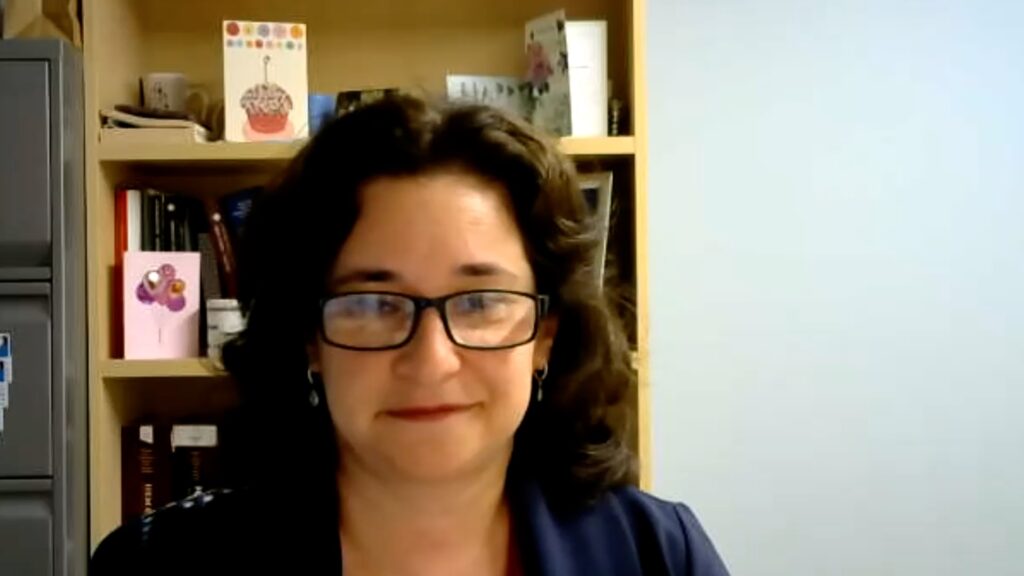Momelotinib, a small-molecule oral inhibitor of the JAK1/JAK2 kinases was investigated in the phase 3 MOMENTUM study in patients with anaemic myelofibrosis (ClinicalTrials.gov Identifier: NCT04173494). touchHAEMATOLOGY were delighted to talk with Dr. Srdan Verstovsek (The University of Texas MD Anderson Cancer Center, Houston, TX, USA) to discuss the mechanism of action of momelotinib, the findings from the phase 3 study, and where momelotinib would fit in the treatment paradigm, if approved.
Questions
- What is momelotinib and what is its mechanism of action? (0:13)
- What did the MOMENTUM phase III clinical trial teach us about the efficacy and safety of momelotinib in the treatment of patients with myelofibrosis and anaemia? (1:55)
- What will be the likely place of momelotinib in the treatment paradigm? (3:56)
Disclosures: Srdan Verstovsek has nothing to disclose in relation to this video interview.
Support: Interview and filming supported by Touch Medical Media. Interview conducted by Victoria Jones.
For more content on myelofibrosis visit touchONCOLOGY here.
Transcript
What is momelotinib and what is its mechanism of action? (0:13)
Well, momelotinib has been around as an investigational agent for quite a long time. It is in a class of JAK inhibitors and inhibits JAK 1 and JAK 2, these are enzymes that are important for blood making, inflammation and in the immune system and by inhibiting the JAKs it would decrease the inflammation and improve the spleen size/ decrease the spleen. So it’s an anti-inflammatory and anti-proliferative agent, as is the case with other already approved JAK inhibitors, three of them. What is different about momelotinib is that it also inhibits the protein which is called ACVR1, we call it sometimes ALK2. Well, this is the protein on the surface of the hepatocytes and it’s related to the iron metabolism. Hepcidin, which is the master regulator of iron metabolism, is decreased through inhibition of ACVR1, which leads to more iron available for erythropoiesis, basically for blood making. So the consequence of that is that momelotinib can also control not just the spleen and symptoms but anaemia. Anaemia benefit is a unique feature of momelotinib, where those other JAK inhibitors. It is being developed as an agent for patients that are symptomatic and anaemic. So it may have a unique mechanism of action and a unique role in the future if it gets approved as a therapy for patients with myelofibrosis, a quite interesting drug that will cover all three cardinal aspects of myelofibrosis that would be anaemia, symptoms and spleen.
What did the MOMENTUM phase III clinical trial teach us about the efficacy and safety of momelotinib in the treatment of patients with myelofibrosis and anaemia? (1:55)
As we treat patients with myelofibrosis with the standard, the front-line JAK inhibitor, which would be typically ruxolitinib, we would encounter problems in delivery of the drug. It is good for the spleen and symptoms, but it worsened anaemia and anaemia, after all, is a factor of myelofibrosis on its own and even through just the biology of the disease, it gets worse. And therefore, we are stranded here with inability to counteract anaemia as a problem through either the drug side effect or through the natural evolution of the disease. And the anaemia is therefore not only inhibiting the ability to provide frontline therapy in a way, but it leads to discontinuation of the front-line therapy in most of the patients. And therefore, MOMENTUM study is the study that was done in the patients that were previously treated with JAK inhibitors that were symptomatic and anaemic. Quite a different study than what we used to do in the past, focusing on the spleen and symptoms. This is for symptoms of anaemia in a second setting, but this is the major problem. MOMENTUM study was a blinded randomized study between the momelotinib and danazol. Danazol is the anabolic steroid that we use to control the symptoms and anaemia. So it’s a valid comparator and it’s a blinded study to prove the point that the momelotinib is very good for quality of life improvement, which was confirmed in the study. And of course, that it was also good for the anaemia and makes many people transfusion independent during the six months of evaluation period of the study or maintains transfusion independence unlike any other drug. A combination of the symptoms and anaemia benefit and also, of course it will control the spleen as well, which will then benefit the patients in a secular setting, as is the case in the study if the drug gets approved in an area near future.
What will be the likely place of momelotinib in the treatment paradigm? (3:56)
We go by the lines of therapy these days in the decision making about myelofibrosis management. If we use ruxolitinib and perhaps pacritinib or fedratinib as a choice for therapy in a frontline setting of patients with myelofibrosis to counteract the spleen and symptoms, we would encounter the possibility of, which is very likely, of anaemia compromising the delivery of these drugs and leading to discontinuations of these agents. This is not to say that anaemia is not a problem from the beginning, there are patients even from the beginning, that suffered a lot from anaemia. And anaemia is the major problem where they don’t even get to the JAK inhibitor in a front-line setting. So, what do we do about anaemia? Momelotinib maybe, if successful in the approval process, a drug of choice for patients that are anaemic and symptomatic, knowing also that it can control the spleen. So I would expect that the momelotinib may become a drug of choice, even in frontline settings for some patients who primarily suffered from anaemia, but most definitely a drug of choice in a secular setting for anaemic symptomatic patients, which is the larger group of people and the area of unmet need as discussed.
Subtitles and transcript are autogenerated.







